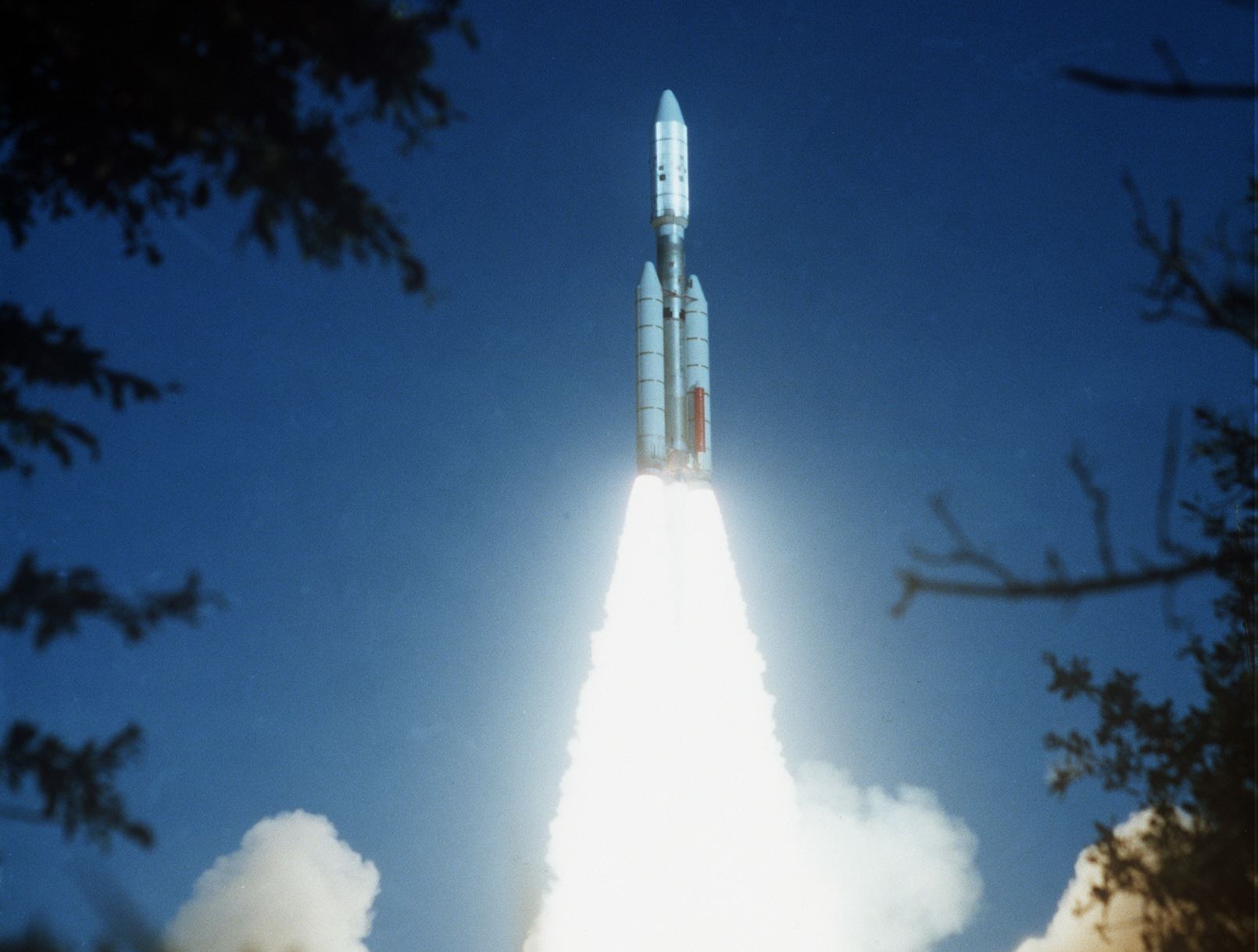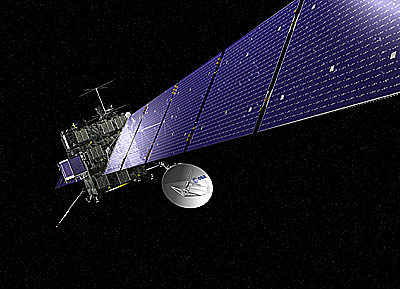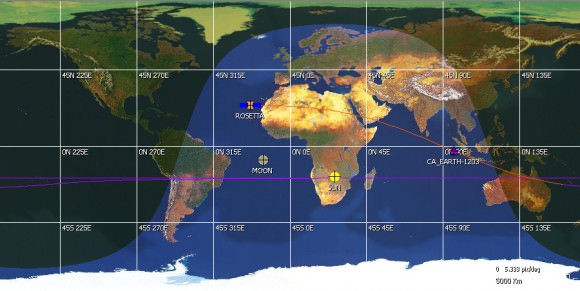[/caption]
Voyager 2 is easily the most famous spacecraft sent from Earth to explore other planets. Launched on August 20, 1977, Voyager visited Jupiter and Saturn, and is the only spacecraft to have ever made a flyby of the outer planets Uranus and Neptune. It flew past Neptune in 1989, but it’s still functioning and communicating with Earth.
Voyager 2 and its twin spacecraft Voyager 1 were built at NASA’s Jet Propulsion Lab in Pasadena, California. The two spacecraft were built with identical components, but launched on slightly different trajectories. Voyager 2 took advantage of a rare alignment of the planets so that it could use a gravity assisting boost as it flew past each one. The increased velocity from Jupiter would help it reach Saturn, Saturn helped it get to Uranus and then to Neptune.
It made its closest approach to Jupiter on July 9, 1979, passing within 570,000 km of the planet’s cloud tops. It captured some of the first, highest resolution images of Jupiter’s moons, showing volcanism on Io, and cracks in the icy surface of Europa. Astronomers now suspect that Europa’s surface hides a vast ocean of water ice.
Voyager 2 then went on to visit Saturn on August 26, 1981, and then onto Uranus on January 24, 1986. This was the first time a spacecraft had ever encountered Uranus, and captured images of the planet close up. Voyager studied Uranus’ rings, and discovered several new moons orbiting the planet. Voyager 2 made its final planetary visit with Neptune on August 25, 1989. Here the spacecraft discovered the planet’s “Great Dark Spot”, and discovered more new moons.
Voyager 2 is now considered an interstellar mission. This means that it has enough velocity to escape the Solar System and travel to another star. Of course, at its current speed, it would take hundreds of thousands of years to reach even the closest star. Scientists think that the spacecraft will continue transmitting radio signals until at least 2025, almost 50 years after it was launched.
We have written many articles about Voyager 2 for Universe Today. Here’s an article about NASA’s diagnosed problems with Voyager 2, and here are some Voyager 2 pictures.
If you’d like more information on the Voyager 2 mission, here’s a link to Voyager’s Interstellar Mission Homepage, and here’s the homepage for NASA’s Voyager Mission Website.
We’ve recorded an episode of Astronomy Cast all about Interstellar Travel. Listen here, Episode 145: Interstellar Travel.
Source: NASA




